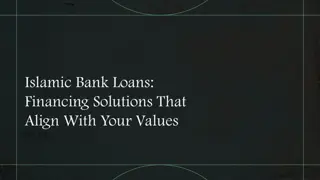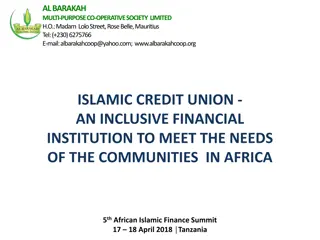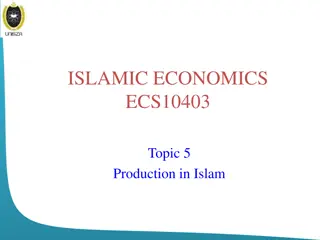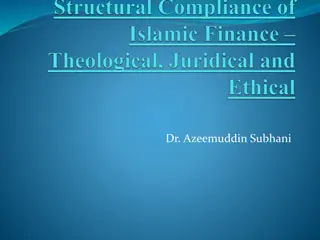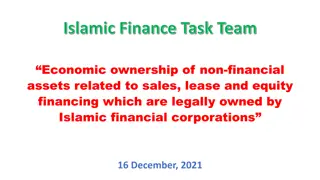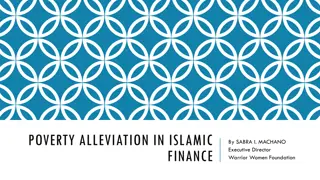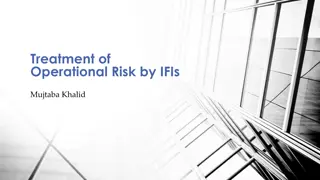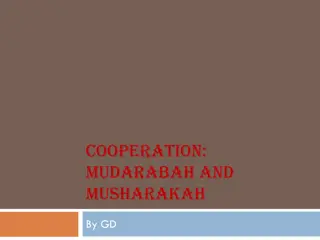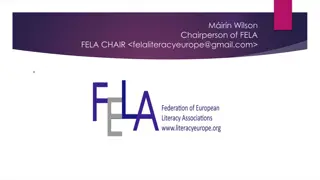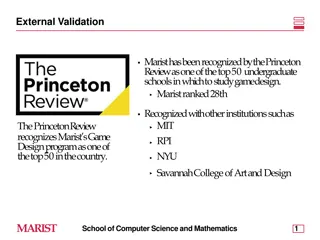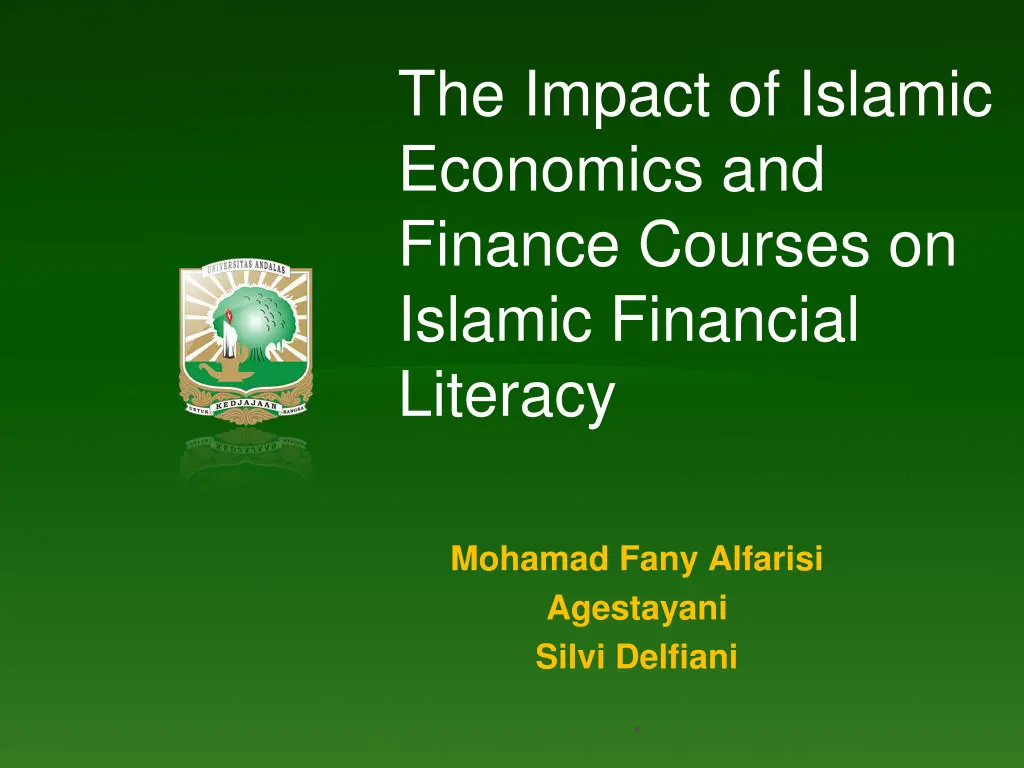
Impact of Islamic Economics and Finance Courses on Financial Literacy
Explore the impact of Islamic economics and finance courses on enhancing Islamic financial literacy. Discover the importance of financial literacy in the Islamic financial industry and the adjustments needed in defining financial literacy within the context of Sharia. Dive into the demographic dividend and the role of Indonesian higher education institutions in offering Islamic economics and finance courses.
Download Presentation

Please find below an Image/Link to download the presentation.
The content on the website is provided AS IS for your information and personal use only. It may not be sold, licensed, or shared on other websites without obtaining consent from the author. If you encounter any issues during the download, it is possible that the publisher has removed the file from their server.
You are allowed to download the files provided on this website for personal or commercial use, subject to the condition that they are used lawfully. All files are the property of their respective owners.
The content on the website is provided AS IS for your information and personal use only. It may not be sold, licensed, or shared on other websites without obtaining consent from the author.
E N D
Presentation Transcript
The Impact of Islamic Economics and Finance Courses on Islamic Financial Literacy Mohamad Fany Alfarisi Agestayani Silvi Delfiani .
Background Islamic financial literacy is deemed as one of the main requirements to increase the size of the Islamic financial industry. According to the 2016 survey of the Indonesia Financial Services Authority (OJK), the Islamic financial literacy index of Indonesian consumers stood at the level of 8.11%.
Background ISLAMIC
Background Given the difference between Islamic and conventional finance, there should be proper modification and adjustment in defining financial literacy within the context of Syariah. With respect to the population composition, Indonesia is granted with a sizable number of those who are in the category of working age.
Background No Sector Conventional (%) Islamic (%) 1 2 Entrepreneur Employee/Professional 27.6 39.8 6.7 12.4 3 4 5 6 Students Housewife Retiree Unemployed and others 23.2 15.2 35.3 22.8 5.3 3.0 9.3 3.7
Indonesian Higher Education Institutions Offering Islamic Economics and Finance Courses And other institutions
Financial Literacy Financial literacy is a knowledge of basic economic and financial concepts, as well as the ability to use that knowledge and other financial skills to manage financial resources effectively for a lifetime of financial well-being (Hung, Parker, and Yoong, 2009)
Financial Literacy Behavior Knowledge Attitude Financial Literacy
Financial Literacy With respect to the divergence between Islamic and conventional finance, there should be some adjustments and modifications in defining and constructing the Islamic financial literacy concept. Basic financial literacy questions normally ask consumer s knowledge on interest rate and how interest rate works.
Islamic Financial Literacy Iqbal and Mirakhor (2011) suggests a number of basic principles that govern Islamic financial system notably: prohibition of interest, asset-based, risk-sharing, money as potential capital, prohibition of speculative behavior, sanctity of contracts and preservation of property rights.
Sample University students of Universitas Andalas, Universitas Negeri Padang and Universitas Islam Negeri (UIN) Imam Bonjol Some students have taken formal Islamic and economics financial courses in their institutions.
Instrument Questionnaire: knowledge, attitude and behavior. Analysis: descriptive and cross-tab
Descriptive Statistic Religion: 99% are Muslims Age: Majority in the age of 21 (43%) Parents education: Mostly high school Family income: 2 million-4.9 million IDR
Islamic Financial Knowledge No Question Responses Incorrect (%) 59.7 2.0 16.3 67.0 Correct (%) 40.3 98.0 83.7 33.0 1 2 3 4 The meaning of riba Example of ribawi transaction Element of akad The right akad for a transaction 5 Negative element of a transaction 38.7 61.3 6 Akad or Islamic bank saving account Characteristic of Islamic mutual funds Takaful Sukuk Mudharabah 86.3 13.7 7 86.3 13.7 8 9 10 43.3 61.7 85.0 56.7 38.3 15.0
Islamic Financial Attitude Factors 1 2 3 4 5 (%) 27.3 (%) 22.7 (%) 15.3 (%) 20.0 14.3 (%) Return Risk 21.0 29.7 22.3 10.7 16.0 Syariah-compliant 36.7 13.7 17.0 18.0 14.3 Company s reputation Service excellence 8.0 19.3 23.3 26.0 23.0 6.7 14.7 21.3 25.3 31.3
Islamic Financial Behavior Product Current Proportion (%) Future Proportion (%) 83.0 49.3 Islamic bank saving account Islamic bank investment account Islamic bank financing Takaful Islamic stocks Sukuk Islamic mutual funds Waqf 46.3 6.0 3.3 1.0 8.3 1.0 0.3 4.3 27.3 52.7 43.3 9.3 15.7 25.3
Islamic Financial Knowledge and Islamic Economics and Finance Courses Islamic Economics and Finance Courses Group Never Total Take at least one course 40 38 78 Islamic Financial Knowledge Category Poor- knowledge (51.3%) [37.4%] (48.7%) [19.7%] (100.0%) [26.0%] 61 132 193 Sufficient- knowledge (31.6%) [57.0%] (68.4%) [68.4%] (100.0%) [64.3%] 6 23 29 Well-knowledge (20.7%) [5.6%] (79.3%) [11.9%] (100.0%) [9.7%] 107 193 300 Total (35.7%) [100.0%] (64.3%) [100.0%] (100.0%) [100.0%]
Conclusion The present study finds that attending formal Islamic Economics and Finance courses can positively contribute to a greater level of Islamic Financial Literacy.







